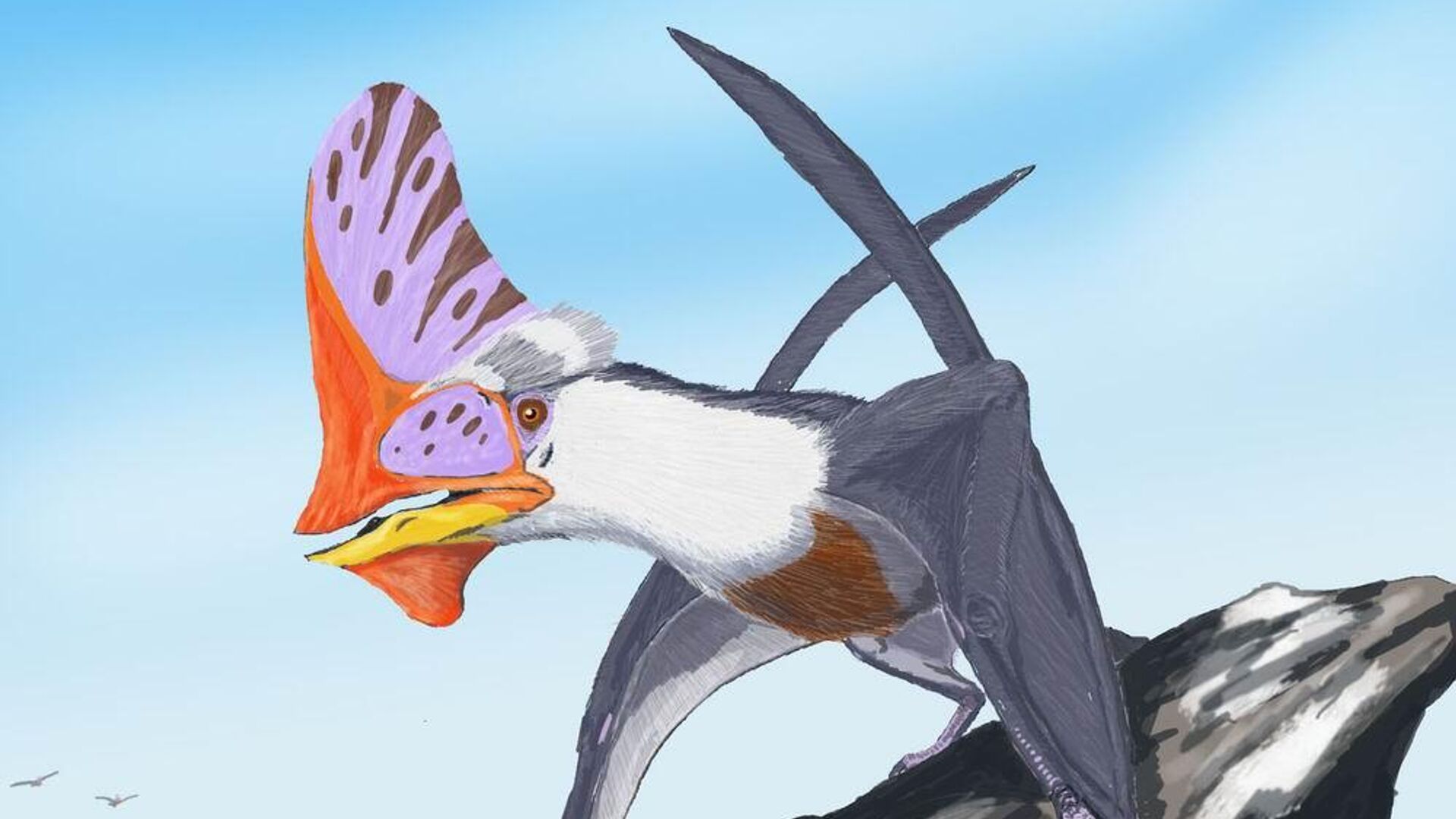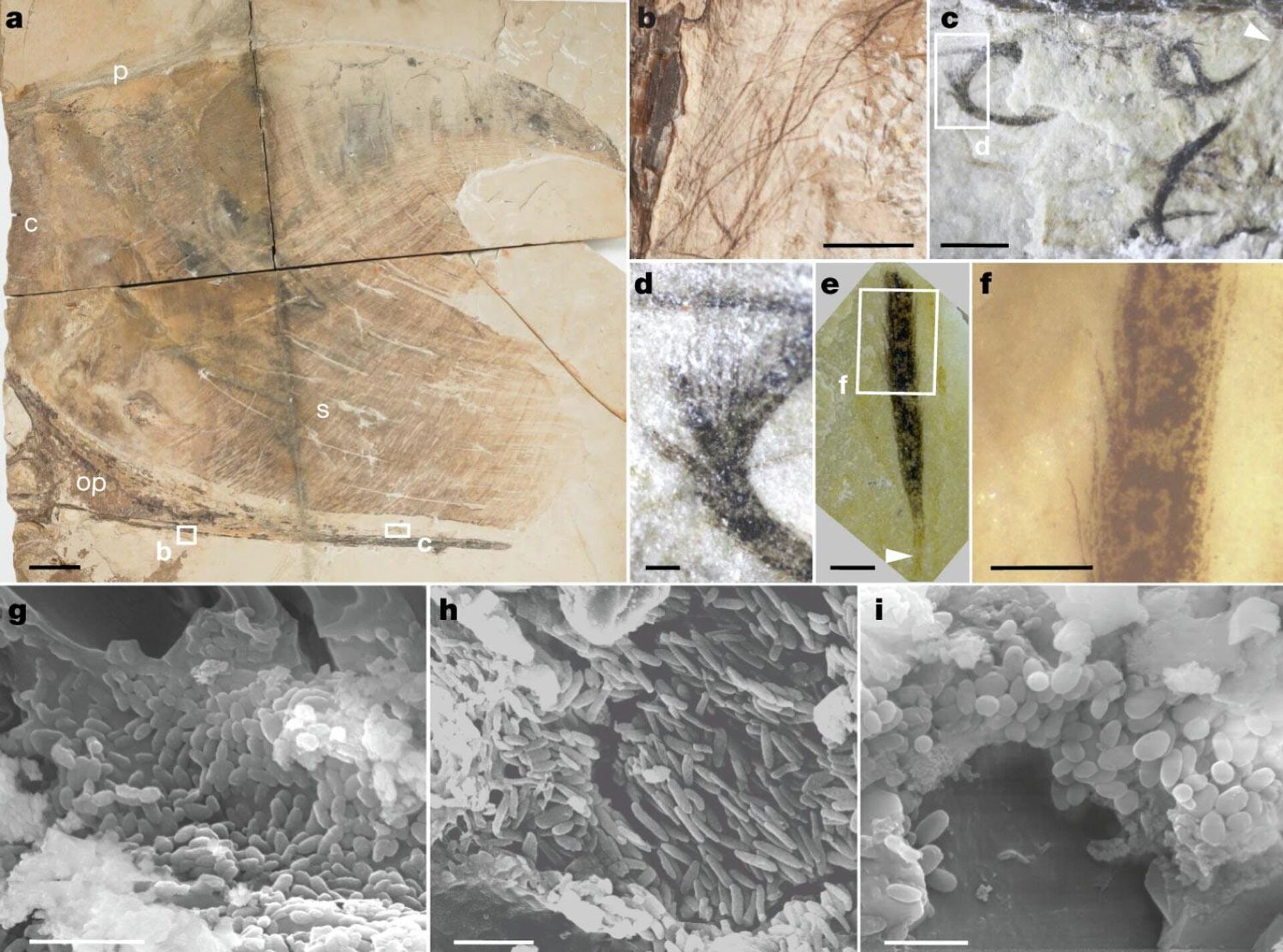https://sputnikglobe.com/20220422/scientists-find-that-some-pterosaurs-altered-feathers-color-due-to-hormone-much-like-birds-today-1094955095.html
Scientists Find That Some Pterosaurs Altered Feathers' Color Due to Hormone, Much Like Birds Today
Scientists Find That Some Pterosaurs Altered Feathers' Color Due to Hormone, Much Like Birds Today
Sputnik International
Feathers are fascinating integumentary adaptations that are intimately tied to the evolutionary success of birds and are even found in a wide range of... 22.04.2022, Sputnik International
2022-04-22T02:41+0000
2022-04-22T02:41+0000
2022-04-22T02:41+0000
science & tech
dinosaur
dinosaurs
pterosaur
feathers
paleontologists
paleontology
https://cdn1.img.sputnikglobe.com/img/07e6/04/16/1094955490_0:59:1000:622_1920x0_80_0_0_e932711ea45455c82e7c6d8be3032a89.jpg
Pterosaurs, the flying cousins of dinosaurs, were able to control the color of their feathers using melanin pigments, according to a new research by an international team of paleontologists from Brazil and Belgium, published in the journal Nature on Wednesday.The research, led by Dr. Aude Cincotta and Prof. Maria McNamara of University College Cork (UCC), is based on the examination of a 115 million-year-old fossilized headcrest of the pterosaur Tupandactylus imperator discovered in north-eastern Brazil.This pterosaur is known for its very large head crest. The scientists identified a fuzzy rim of feathers around the bottom of the crest, consisting of short wiry hair-like feathers and fluffy branching feathers.According to the research, the scientists used high-powered electron microscopes to examine the feathers and discovered retained melanosomes, which are granules of the pigment melanin. Surprisingly, the research reveals that the melanosomes in different types of feathers have varied geometries.According to McNamara, quoted by ScienceDaily, pterosaurs must have had the "genetic machinery" to alter the colors of their feathers, as distinct melanosome forms were found in different pterosaur feather kinds.The extraordinary specimen has been returned to Brazil thanks to the combined efforts of Belgian and Brazilian experts and officials, as well as a private contributor, according to the report upon the publication.From 230 to 66 million years ago, until the end of the Cretaceous period and the Mezozoic era, pterosaurs coexisted with dinosaurs. They were likely related at some point in time, but despite not being bird ancestors, pterosaurs are more closely related to birds and other dinosaurs than crocodiles or any other living reptile.
Sputnik International
feedback@sputniknews.com
+74956456601
MIA „Rossiya Segodnya“
2022
News
en_EN
Sputnik International
feedback@sputniknews.com
+74956456601
MIA „Rossiya Segodnya“
Sputnik International
feedback@sputniknews.com
+74956456601
MIA „Rossiya Segodnya“
science & tech, dinosaur, dinosaurs, pterosaur, feathers, paleontologists, paleontology
science & tech, dinosaur, dinosaurs, pterosaur, feathers, paleontologists, paleontology
Scientists Find That Some Pterosaurs Altered Feathers' Color Due to Hormone, Much Like Birds Today
Kirill Kurevlev
Managing Editor
Feathers are fascinating integumentary adaptations that are intimately tied to the evolutionary success of birds and are even found in a wide range of non-avian dinosaurs dating back to the Middle Jurassic period. Since feathers are very fragile to survive the process of fossilization, scientists are usually left wondering what color they were.
Pterosaurs, the flying cousins of dinosaurs, were able to control the color of their feathers using melanin pigments, according to a new research by an international team of paleontologists from Brazil and Belgium,
published in the journal Nature on Wednesday.
The research, led by Dr. Aude Cincotta and Prof. Maria McNamara of University College Cork (UCC), is based on the examination of a 115 million-year-old fossilized headcrest of the pterosaur Tupandactylus imperator discovered in north-eastern Brazil.
This pterosaur is known for its very large head crest. The scientists identified a fuzzy rim of feathers around the bottom of the crest, consisting of short wiry hair-like feathers and fluffy branching feathers.
"For decades paleontologists have argued about whether pterosaurs had feathers," Cincotta, who admitted to being surprised with the discovery, said, per ScienceDaily. "The feathers in our specimen close off that debate for good as they are very clearly branched all the way along their length, just like birds today."
According to the research, the scientists used high-powered electron microscopes to examine the feathers and discovered retained melanosomes, which are granules of the pigment melanin. Surprisingly, the research reveals that the melanosomes in different types of feathers have varied geometries.
"Our study has important implications for understanding the evolution of melanin-based coloration. Melanosomes in other pterosaur fossils have ovoid to spheroidal shapes, even in integumentary filaments or feathers," said the research's conclusion. "The discovery of elongate melanosomes in the feathers, but not skin, of the specimen of Tupandactylus described here expands the known range of feather melanosome geometries in pterosaurs and confirms that pterosaurs show similar tissue-specific trends in melanosome geometry to fossil and extant birds and other theropod."
According to McNamara, quoted by ScienceDaily, pterosaurs must
have had the "genetic machinery" to alter the colors of their feathers, as distinct melanosome forms were found in different pterosaur feather kinds.
"This feature is essential for color patterning and shows that coloration was a critical feature of even the very earliest feathers," she said.
The extraordinary specimen has been returned to Brazil thanks to the combined efforts of Belgian and Brazilian experts and officials, as well as a private contributor, according to the report upon the publication.
From 230 to 66 million years ago, until the end of the Cretaceous period and the Mezozoic era, pterosaurs coexisted with dinosaurs. They were likely related at some point in time, but despite not being bird ancestors, pterosaurs are more closely related to birds and other dinosaurs than crocodiles or any other living reptile.


